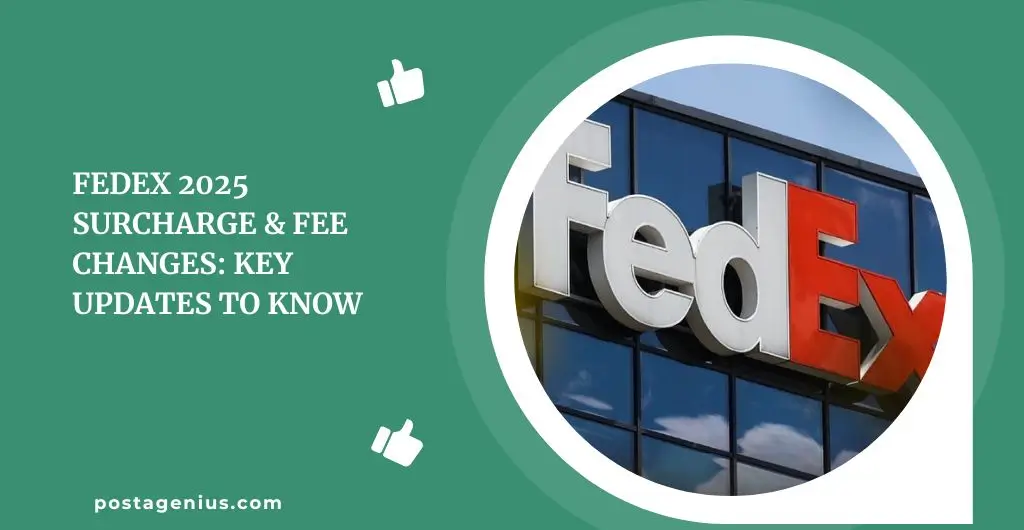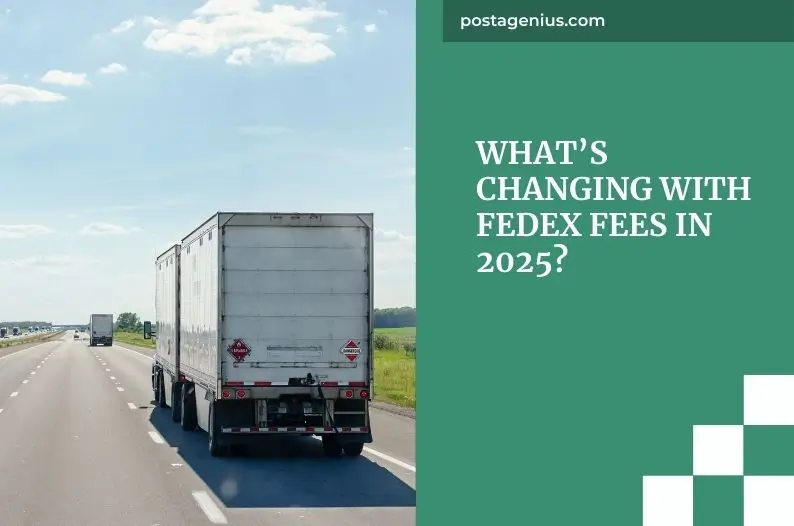FedEx 2025 Surcharge & Fee Changes: Key Updates to Know

Shipping with FedEx in 2025? Prepare for some changes that could impact your costs. As part of its ongoing efforts to streamline operations and handle increasing demand, FedEx has updated its surcharges and fees.
These adjustments are aimed at balancing rising operational expenses, addressing the complexities of e-commerce growth, and preparing for seasonal peaks.
Whether you’re a small business shipping daily or an occasional sender, these changes are worth understanding. Let’s break it all down and explore how to stay ahead of the curve.
Contents
- 1 What’s Changing with FedEx Fees in 2025?
- 1.1 1. Residential Delivery Surcharge
- 1.2 2. Fuel Surcharge Update
- 1.3 3. Oversize Package Fees
- 1.4 4. Peak Season Surcharges
- 1.5 5. Additional Handling Charges
- 1.6 How These Changes Impact You
- 1.7 A Quick Look at the Changes
- 1.8 Why Are These Changes Happening?
- 1.9 How to Manage These Changes
- 1.10 FAQs About FedEx’s 2025 Surcharge Updates
- 1.11 The Bottom Line
What’s Changing with FedEx Fees in 2025?

FedEx has made several adjustments to its surcharges, focusing on residential deliveries, fuel, oversized packages, and more. Here are the highlights:
1. Residential Delivery Surcharge
FedEx has raised the surcharge for delivering to residential addresses. This increase reflects the costs of handling growing residential delivery volumes, particularly in rural areas where logistics can be more challenging.
2. Fuel Surcharge Update
In response to fluctuating fuel prices, FedEx is introducing a tiered surcharge system. This approach allows fees to adjust based on current fuel costs, making the charges more predictable for customers.
3. Oversize Package Fees
Oversized shipments will now incur higher penalties, with fees jumping by over 15%. This adjustment encourages customers to ship within size and weight limits, reducing inefficiencies in transportation.
4. Peak Season Surcharges
Expect peak season fees to kick in earlier—starting mid-October. FedEx is expanding the surcharge period to better manage the growing demand for holiday shipping.
5. Additional Handling Charges
Packages that are irregularly shaped, oversized, or require extra care will see slightly higher handling fees. Businesses are encouraged to review their packaging methods to avoid these costs.
How These Changes Impact You

These changes aren’t just about numbers; they’re about how you ship and what it costs. Here’s what they mean for different types of customers:
For Businesses
- Higher Shipping Budgets: If you ship to residential addresses frequently or deal with oversized items, expect an increase in your overall shipping costs.
- Encouragement to Optimize Packaging: You’ll save money by ensuring your packages meet FedEx’s size and weight guidelines.
- Seasonal Planning: Start holiday preparations earlier to account for peak season surcharges.
For Individual Shippers
- Be Mindful of Size: A large or oddly shaped package could cost you significantly more in 2025.
- Plan Ahead: Avoid peak periods when possible to sidestep seasonal surcharges.
A Quick Look at the Changes
| Fee Type | 2024 Rate | 2025 Rate | Key Takeaway |
|---|---|---|---|
| Residential Delivery Surcharge | $4.50 | $4.95 | Higher fees for delivering to home addresses, especially in remote areas. |
| Fuel Surcharge | Variable | Tiered | Adjusted rates based on fluctuating fuel prices for better transparency. |
| Oversize Package Fee | $90 | $105 | Significant increase for non-compliant packages. |
| Peak Season Surcharge | Starts Nov 1 | Starts Oct 15 | Earlier surcharges during busy shipping times. |
| Additional Handling Charges | $16 | $18 | Higher fees for special packaging or irregular items. |
Why Are These Changes Happening?
FedEx has to keep up with the growing complexity of the logistics industry. With more people shopping online and demanding faster deliveries, shipping networks face immense pressure. These fees help FedEx:
- Offset rising operational costs.
- Manage increasing volumes, particularly during peak seasons.
- Encourage better shipping practices to streamline operations.
How to Manage These Changes

Here are some practical tips to minimize the impact of these changes:
- Ship Smartly: Stick to FedEx’s size and weight guidelines to avoid oversize fees.
- Monitor Fuel Updates: Keep an eye on fuel surcharge rates to plan your shipping budgets better.
- Plan Ahead: Avoid shipping during peak surcharge periods when possible.
- Optimize Packaging: Review your packaging processes to reduce the need for additional handling charges.
- Negotiate Rates: High-volume shippers may benefit from discussing custom pricing with FedEx.
FAQs About FedEx’s 2025 Surcharge Updates
1. Why are residential delivery fees increasing?
With more home deliveries, particularly in rural areas, FedEx is adjusting fees to reflect the additional resources needed.
2. How will the fuel surcharge system work in 2025?
FedEx is moving to a tiered system where fees adjust based on current fuel costs, providing more transparency.
3. What’s the impact of peak season surcharges?
These surcharges apply earlier and for a longer period, making it essential to plan shipments ahead of the holiday rush.
4. How can I avoid additional handling fees?
Ensure packages are properly sized, shaped, and packed to meet FedEx’s standard shipping requirements.
5. Are these changes permanent?
While surcharge rates can vary year-to-year, these 2025 changes are expected to remain in effect throughout the year.
The Bottom Line
FedEx’s changes to surcharges and fees in 2025 reflect the growing demands of e-commerce, rising operational costs, and the need for more efficient logistics. While these updates may increase shipping expenses, understanding them can help you plan smarter.
Whether you’re shipping for business or personal reasons, making adjustments like optimizing packaging, avoiding peak times, and staying informed about rates can help you save money and ensure smooth deliveries.
By preparing ahead, you can navigate these changes with ease and confidence.






